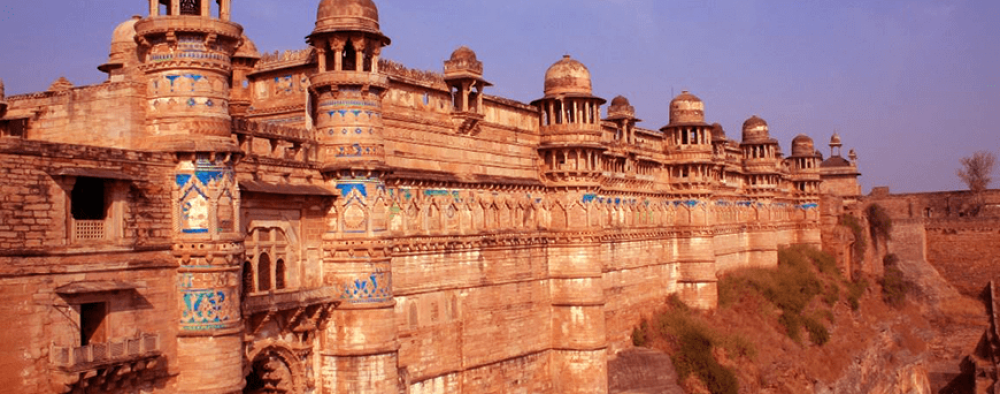

The history of tourism at Gwalior Fort, in Gwalior, Madhya Pradesh, India, can be traced back to the times when the fort was a living testament to the region's grandeur. Known as the 'pearl amongst fortresses in India', its architectural beauty and historical significance have attracted visitors for centuries.
Established in the 8th century by the local chieftain Suraj Sen, Gwalior Fort has been the center of numerous North Indian kingdoms and has witnessed many fierce battles. Its majestic appearance atop a rocky massif has been a symbol of power and resilience. Rulers from different dynasties like the Pratiharas, Kachwahas, Tomars, Mughals, Marathas, and the British have controlled and enhanced the castle with their unique additions.
Tourism in Gwalior Fort started to flourish during the reign of the British Raj when they began to realize its potential as an attraction. The advent of the Indian railways and development of better road networks eased access to the site, further boosting its popularity. After India's independence, the Government recognized Gwalior Fort as a national monument and intensified conservation efforts.
To enhance the experience for tourists, various amenities and visitor services like guided tours, light and sound shows, and museum exhibitions have been installed at the fort. The archeological museum at Gwalior Fort, which displays artifacts from the region, also plays a significant role in educating visitors about the fort's history.
In recent years, tourism at Gwalior Fort has adapted to global trends, with a focus on sustainability and digital media. Social media has emerged as an important tool for marketing and engaging with potential visitors. The fort is often featured in travel vlogs and blogs, which helps in attracting younger audiences. Gwalior Fort now embraces modern technology with the launch of apps and virtual reality experiences for those who cannot visit in person.
Moreover, festivals and cultural events held at the fort premises, like the Gwalior Heritage Festival, attract visitors seeking immersive cultural experiences. Despite the challenges of the COVID-19 era, the fort has managed to maintain safety protocols, making it a secure destination for tourists.
Today, Gwalior Fort stands not only as an embodiment of the opulent history of India but also as a burgeoning hub for sustainable and digital tourism. Its constant evolution in step with the needs and trends of the global tourist landscape represents the fort's ongoing legacy as an enduring attraction.